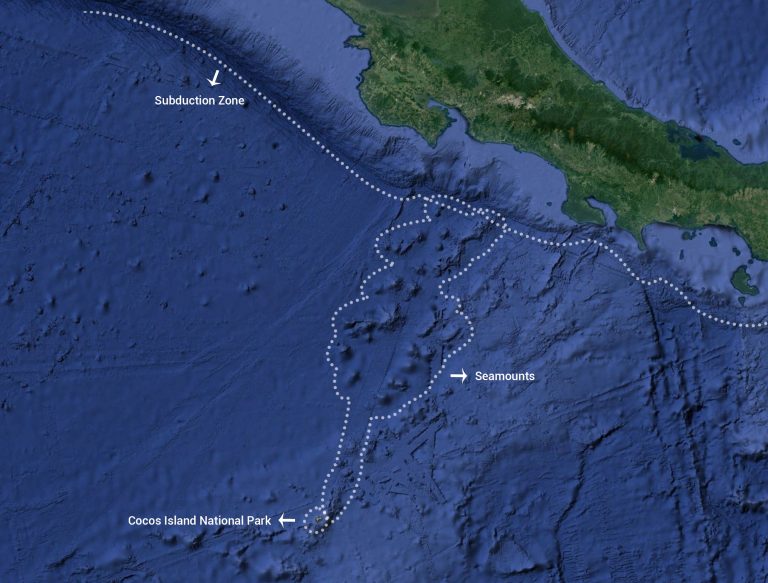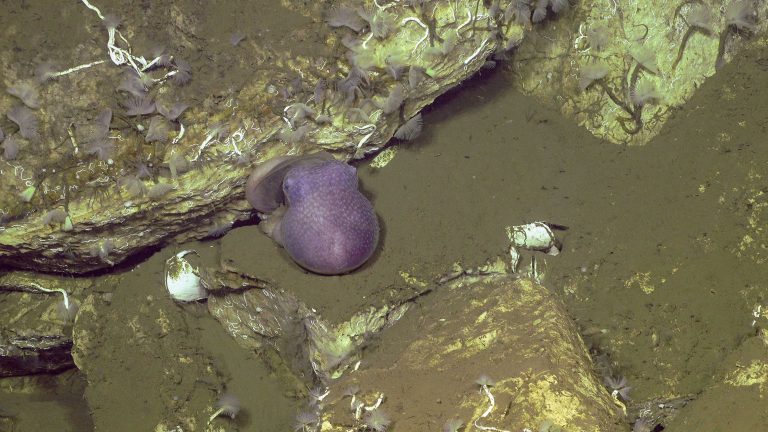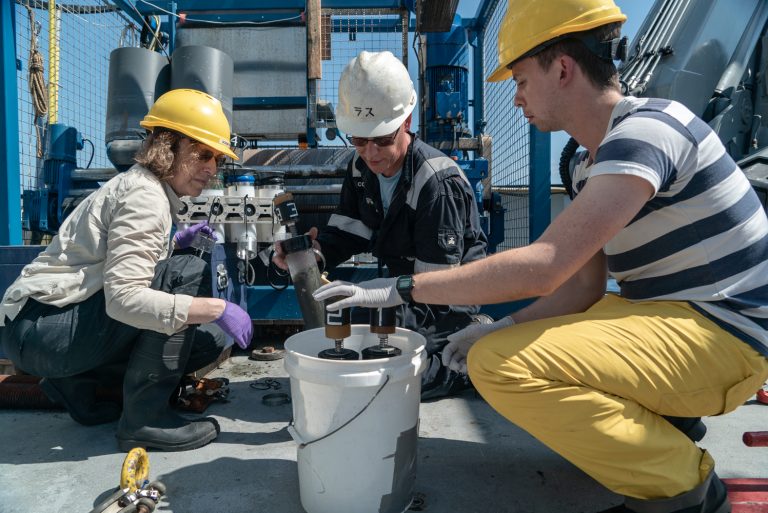Haz click aquí para blog en español
Just a few hours journey from the Pacific coast of Costa Rica, the continental shelf ends. The Costa Rican shelf meets the continental slope, which is a drastically steep drop-off, suddenly going from relatively shallow water to an average of about 3500 meters of depth. The reason behind this dramatic geology is our planet’s plate tectonics. Here, along the Middle America Trench, the Cocos Plate subducts beneath the Caribbean Plate.
This area of convergence is known as the Costa Rican margin, where the continental crust ends. Below it lies the Cocos tectonic plate, which is not flat, but dotted with seamounts. Think of the crust as a giant sponge filled with fluids that are rushing out as the subducting seamounts push up and squeeze the overriding plate. “So everywhere you get a seamount subducting beneath Costa Rica, all of its contents are seeping out at the surface of the seafloor,” explains Dr. Erik Cordes, Chief Scientist of this expedition. “Methane and other gases are coming up, sometimes even bubbling up out the seafloor, which changes all the biological communities around.”
In addition to being an important energy source for humans, methane forms the basis of cold seep ecosystems. Deep-sea seep sediments sustain different geochemical and microbial processes that are reflected in a complex mosaic of specialized fauna. During this cruise, researchers will be looking at the seeps on the Costa Rican margin, which are related to old seamounts that have already slid under the Caribbean Plate. In addition to that, the team will also examine other seamounts that extend from the margin all the way to Cocos Island National Park, sites that have never been visited by any human being before. “Every time we go down to the deep ocean we discover something new. There’s something we haven’t seen, there’s a new species, or a totally new type of habitat. There’s nothing like the excitement of looking at something that you know is new and trying to figure out how this new piece of our planet works,” shares Dr. Cordes.

Familiar Spots
The researchers onboard will certainly get a first look at uncharted territory, but at the same time, they are very interested in some of the sites they are quite familiar with. This expedition is part of a continuing time series that will enable them to compare the data collected with that of previous cruises, which will contribute to our understanding of the progression of climate and ocean change in the region. “One of the most important things I think we’re doing is to set a baseline that will help us understand how these communities are now, so as they change in the future we can see it and we can demonstrate if it is related to humans or not,” explains Dr. Cordes. “We’ve been here year after year, and have gotten to know some of these sites pretty well. That will let us look for more long-term changes as the temperature in the ocean rises, as the oxygen continues to go down, and as the pH decreases. Without that baseline knowledge, without characterizing the deep ocean now, we would never be able to recognize those changes years from now.”

Convenient Laboratory
For Dr. Cordes and all of the resident scientists, this part of the world offers a very rare opportunity. This area has extremely active methane release and naturally low oxygen levels in the water. The seamounts themselves are unique and each one hosts slightly different communities – they form a sort of island chain underneath the ocean which produces interesting dynamics. Offshore Costa Rica is one of the few places in the world where all of these things happen at the same place. “There are a lot of questions that we can ask that are particular to this area, but we can apply our results to lots of different places around the world. It is just that it is convenient that they are all packed into one natural laboratory,” says Dr. Cordes.
Chemosynthetic ecosystems such as these play significant roles in the functions and health of our oceans, and therefore our planet. Understanding the connections between these productive habitats and the ocean as a whole is key to determine the best ways to manage and protect these natural resources as we move forward. To Dr. Cordes, it is very clear: “The deep sea is the largest habitat on Earth. Understanding how that habitat functions will help us understand how the planet as a whole works.”


